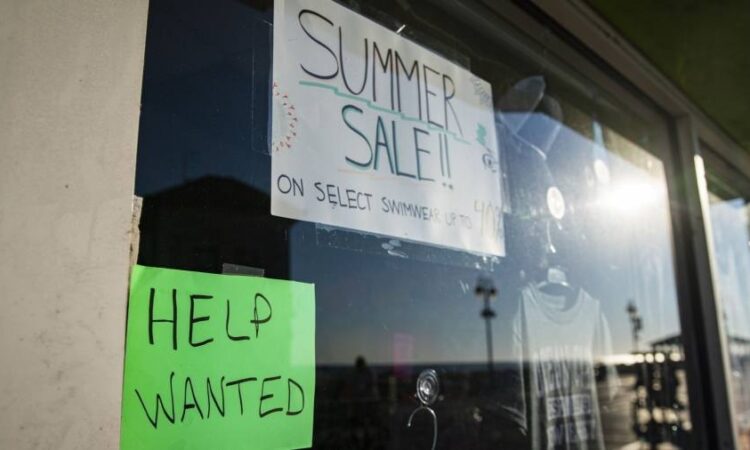
Receive free US economy updates
We’ll send you a myFT Daily Digest email rounding up the latest US economy news every morning.
New data confirming that the world’s largest economy is cooling has given the US Federal Reserve room to hold interest rates steady, economists say, even as it leaves open the possibility of resuming a historic monetary tightening campaign later in the year.
Friday’s US jobs report — which showed the unemployment rate ticked up in August while a healthy 187,000 jobs were added — marked the latest evidence this week that the economy, while still resilient, is beginning to cool as consumers and businesses confront higher borrowing costs.
The new data comes just three weeks ahead of a crucial Fed policy meeting when chair Jay Powell and officials will decide whether they have squeezed the economy sufficiently to bring historically high inflation back under control, after raising the benchmark interest rate to a 22-year high.
The Fed is widely expected to waive an interest rate increase at the September gathering, leaving the federal funds rate between 5.25-5.5 per cent.
“The Fed doesn’t need to be extremely aggressive anymore,” said Gargi Chaudhuri, head of iShares investment strategy Americas at BlackRock. “Now is the time to just let restrictive rates continue to work as they have been.”
On Friday, President Joe Biden said the US was in “one of the strongest job-creating periods” in its history and hailed the latest jobs report as yet another sign that inflation could fall without significant losses across the labour market.
Job openings have also fallen to the lowest level in roughly two years while fewer Americans are quitting their jobs, data from the Bureau of Labor Statistics showed this week.
Coupled with an inflation report on Thursday showing that price rises have slowed despite brisk consumer spending on everyday items and services this summer, economists and investors say the US central bank can afford to wait before inflicting more pain on the economy.
“There’s really no reason for them to deliver more tightening at this point,” said Jan Hatzius, chief economist at Goldman Sachs. “It makes a lot of sense to stay on hold for potentially quite a long time.”
If the Fed forgoes a September increase, it would maintain the gradual pace of tightening begun this summer, when the central bank ended 10 consecutive months of rate rises by pausing in June and opting for a quarter-point rate rise, in July.
“It almost feels like the Fed can have its cake and eat it too, lowering inflation without causing too much damage in the labour market,” said Blerina Uruçi, chief US economist at T Rowe Price.
While the “benign” economic data this week affirmed her call that the central bank can pass up a September move, she is still braced for further tightening later this year.
“There are reasons to be cautiously optimistic, but at the same time, the data has behaved in such unusual ways that we have to recognise that there is a lot of uncertainty around what happens next,” Uruci said.
Powell last week warned that inflation remains “too high” and that further tightening could be needed. Future decisions would be made “carefully” and reflect the “totality” of data, he said at the Fed’s annual symposium in Jackson Hole, Wyoming.
Officials are now trying to balance the risk of squeezing the economy too hard and causing undue economic pain, with the risk of allowing inflation to remain too high for too long.
One concern is whether robust consumer spending and other signs of economic resilience mean the Fed will need to restrict money supply further to bring inflation back to the central bank’s 2 per cent target — a risk flagged recently by both Powell and officials such as Susan Collins of the Boston Fed.
That is also a concern for Marc Giannoni, who formerly worked at the Fed’s regional banks in Dallas and New York and is now at Barclays. He forecasts a final quarter-point rate rise in November.
Omair Sharif, president of forecasting group Inflation Insights, said he was worried about pockets of inflations resurfacing in the fourth quarter of the year, if sectors such as the car market remain too hot. Wholesale vehicle prices have already begun to go back up, he noted. He is also closely watching health insurance costs.
“We’re just going to be moving in the wrong direction, from close to target to back up to around 3.5 per cent on the core consumer price index,” he said of his year-end forecast. As of July, it hovered at 4.7 per cent. Sharif has pencilled in another rate rise as late as December as a result.



